List of Several Articles by Jeff Lindsay at
Interpreter: A Journal of Latter-day Saint Faith and Scholarship
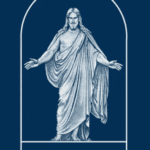
Interpreter: A Journal of Latter-day Saint Faith and Scholarship 18 (2016): 171-217
The Yoke of Christ: A Light Burden Heavy With Meaning
Christ’s call to take his yoke upon us in Matthew 11 may have connections to the name of Christ (via an intriguing word play), temple covenants, priestly robes, and sacred anointing.

Interpreter: A Journal of Latter-day Saint Faith and Scholarship 19 (2016): 153-239
Joseph and the Amazing Technicolor Dream Map: Part 1 of 2
Is the Book of Mormon’s description of Lehi’s Trail, including places like the River Laman, Nahom, and Bountiful, implausible and evidence that Joseph Smith made things up?

Interpreter: A Journal of Latter-day Saint Faith and Scholarship 19 (2016): 247-326
Joseph and the Amazing Technicolor Dream Map: Part 2 of 2
Could rare maps of Arabia account for the remarkable and plausible connections between the Arabian Peninsula and the Book of Mormon’s descriptions of Lehi’s Trail?
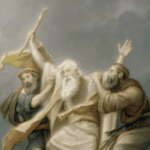
Interpreter: A Journal of Latter-day Saint Faith and Scholarship 19 (2016): 153-239
Nephi’s allusion to the strength of Moses may be a clue about an unexpected relationship between the Brass Plates and the Book of Moses. Exploring that leads to more surprises, and the exploration of an important Book of Mormon theme.
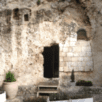
Interpreter: A Journal of Latter-day Saint Faith and Scholarship 22 (2016): 233-277
Modern scholars have identified several ancient motifs involving dust that are beautifully pursued in the Book of Mormon. Rising from the dust can represent keeping covenants, receiving political authority, being resurrected, and being enthroned, for example. The “voice from the dust” shows artful awareness of what scholars can now point out in the ancient Near East.
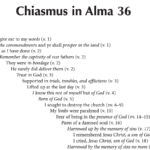
Interpreter: A Journal of Latter-day Saint Faith and Scholarship 22 (2016): 295-318
The beautiful chiasmus found in Alma 36 has some puzzling aspects that are said to be serious flaws by some. However, the implications of the “arise from the dust” complex of themes in the Book of Mormon may show that further rich parallels are present that enhance the poetical structure.
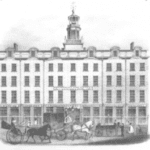
Interpreter: A Journal of Latter-day Saint Faith and Scholarship 23 (2017): 161-235
The Great and Spacious Book of Mormon Arcade Game: More Curious Works from Book of Mormon Critics
Rick Grunder claims the story was inspired by a June 1829 visit to Rochester. There Joseph could have seen a “great and spacious building,” a river, an iron railing, and even fruit trees. The extensive logical gaps in this creative theory are explored.
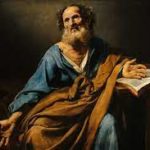
Interpreter: A Journal of Latter-day Saint Faith and Scholarship 25 (2017): 283-321
Christ gave a charge to His New World disciples (Mormon 9:22–25). These words are very similar to the commission of Christ to His apostles at the end of the Gospel of Mark (Mark 16:9–20). Does this make the Book of Mormon anachronistic? Here we examine evidence for the unity of the Gospel of Mark.

Interpreter: A Journal of Latter-day Saint Faith and Scholarship 25 (2017): 323-365
Building on Part 1, we examine we examine further Book of Mormon implications from the thematic evidence for the unity of Mark, including Elijah themes in the Book of Mormon.
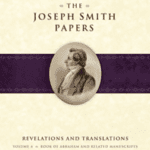
Interpreter: A Journal of Latter-day Saint Faith and Scholarship 33 (2019): 13-104
A Precious Resource with Some Gaps
My review of The Joseph Smith Papers, Revelations and Translations, Volume 4: Book of Abraham and Related Manuscripts, eds. Robin Scott Jensen and Brian M. Hauglid (Salt Lake City: Church Historian’s Press, 2018). While this is an important and valuable volume, it is also highly flawed, being heavily influenced by the errant perspectives of a prominent critic of Joseph Smith. See also the 2019 review by John Gee, “The Joseph Smith Papers Project Stumbles.” The Joseph Smith Papers team responded to my review and John Gee’s in Matthew Grow and Matthew Godfrey, “The Joseph Smith Papers and the Book of Abraham: A Response to Recent Reviews.” My rejoinder was published as “A Welcome Response, but Flaws Remain.”

Jeff Lindsay and Noel B. Reynolds, Interpreter: A Journal of Latter-day Saint Faith and Scholarship 44 (2021): 1-92
Building on an earlier proposal from Noel Reynolds that the brass plates mentioned in the Book of Mormon had material related to the Book of Moses, additional findings and connections are presented here that strengthen the case for a relationship. Such connections might be assumed to arise from Joseph drawing from the Book of Mormon when later drafting the Book of Moses; however, that view overlooks significant evidence indicating that the direction of dependence is the other way around. The Book of Moses may be more deeply rooted in antiquity that many have recognized in the past. The findings also have implications for the origins and antiquity of the Book of Mormon.
The full list of my articles at Interpreter is available on the Interpreter website.
